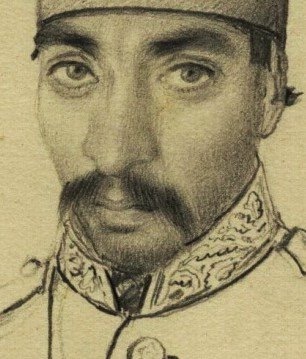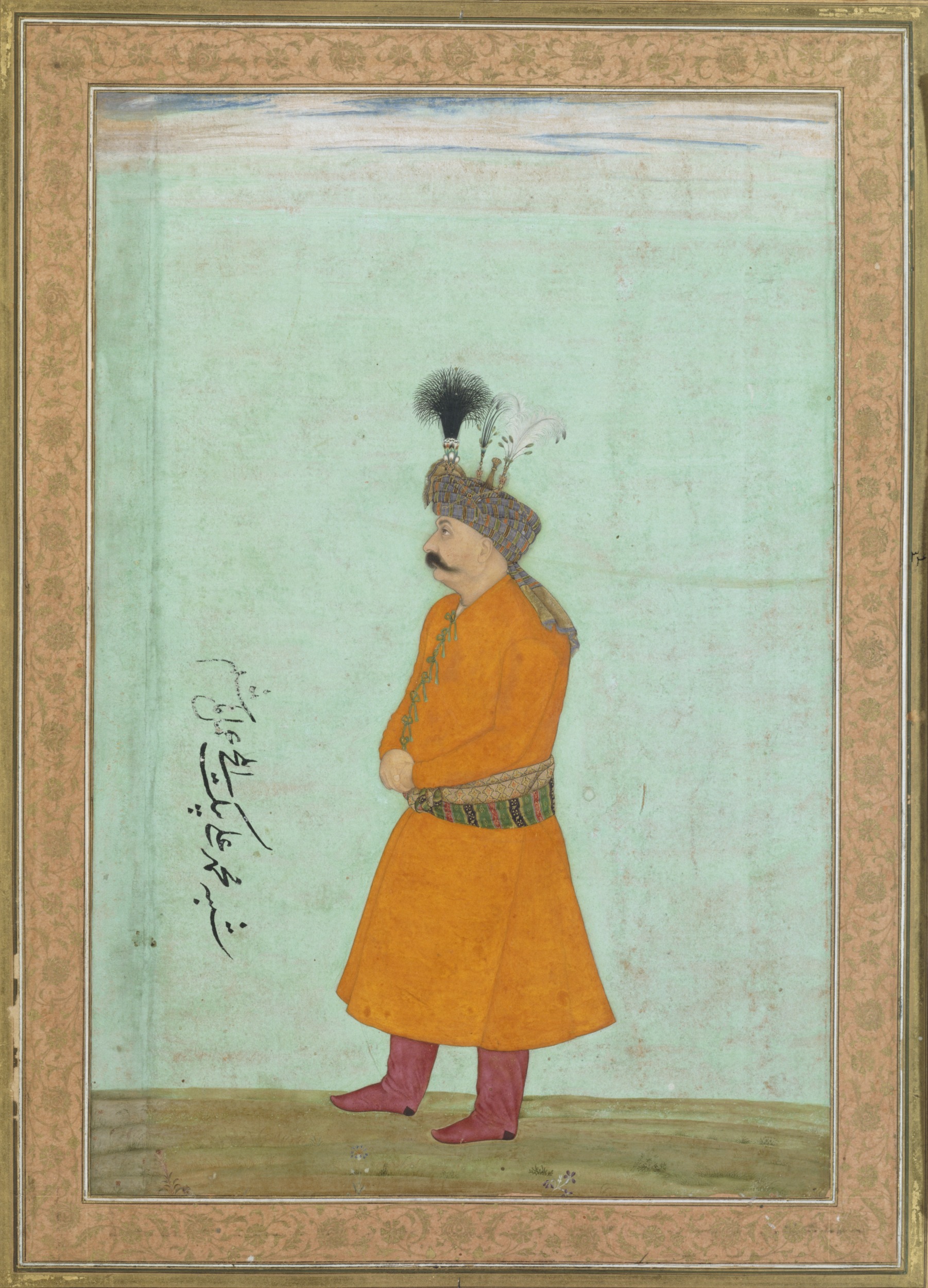|
Anoushiravan Mirza
Prince Anoushiravan Mirza "Zia' od-Dowleh" "Amir Touman" (1833-1899) was a Persian prince of the Qajar dynasty, politician, and governor. Life and career Anoushiravan Mirza also written Anushirvan Mirza was born on 19 August 1833 at Ardabil, Iran, and died on 23 October 1899 in Tabriz after developing apoplexy and paralysis. He was at Shusha, Karabakh. He was the first-born and eldest son of Prince Bahman Mirza, the governor-general (vali (governor), vali) of Azerbaijan (Iran), Azerbaijan in the time of Mohammad Shah Qajar. His mother was Bahman Mirza's first chief wife Princess Malek Soltan Khanom, daughter of Mohammad Taqi Mirza, Prince Mohammad Taghi Mirza "Hessam os-Saltaneh". After Bahman Mirza fell out of favour at court in Tehran and exiled to Russia in 1848 his wives and children followed him to Russian occupied Caucasus province of Karabakh. But shortly after 1850 Anoushiravan Mirza moved back to Iran. And when his cousin Nasser al-Din Shah pardoned Bahman Mirza in 1872, ... [...More Info...] [...Related Items...] OR: [Wikipedia] [Google] [Baidu] |
Tabriz
Tabriz ( fa, تبریز ; ) is a city in northwestern Iran, serving as the capital of East Azerbaijan Province. It is the List of largest cities of Iran, sixth-most-populous city in Iran. In the Quri Chay, Quru River valley in Iran's historic Azerbaijan (Iran), Azerbaijan region between long ridges of volcanic cones in the Sahand and Eynali mountains, Tabriz's elevation ranges between above sea level. The valley opens up into a plain that gently slopes down to the eastern shores of Lake Urmia, to the west. With cold winters and temperate summers, Tabriz is considered a summer resort. It was named World Carpet Weaving City by the World Crafts Council in October 2015 and Exemplary Tourist City of 2018 by the Organisation of Islamic Cooperation. With a population of over 1.7 million (2016), Tabriz is the largest economic hub and metropolitan area in northwest Iran. The population is bilingual, speaking Azerbaijani language, Azerbaijani and Persian. Tabriz is a major heavy industrie ... [...More Info...] [...Related Items...] OR: [Wikipedia] [Google] [Baidu] |
Hasan Ali Khan Garroosy
Hasan Ali Khan Garrusi (1820–1900), also known as Amīr(-e) Neẓām Garrūsī or Sālār-e Laškar, was an Iranian diplomat, officer, statesman, and literary figure of the Qajar period. He was born in Bijar to a Kurdish family from the Kabudvand tribe in 1820. Biography Born in 1820 to a Kurdish family, his mother was a former concubine given to his father by the governor of Garrus Mohammad-Sadeq Khan as a favor. His father and grandfather were attached to the court of the crown prince of Tabriz. As part of his education, Hassan Ali Khan was taught Arabic and Persian composition, history, calligraphy and perhaps theology. As part of the Garrus regiment, Hasan Ali participated in the Herat campaign of 1837/38 and was later assigned to the Tabriz garrison and to pacify the Kermanshah region in 1841/42. He was then summoned to the capital and chose to leave Bijar for the Shah Abdol-Azim Shrine near Tehran following the suspicious death of his father. He was charged with patrici ... [...More Info...] [...Related Items...] OR: [Wikipedia] [Google] [Baidu] |
1833 Births
Events January–March * January 3 – Reassertion of British sovereignty over the Falkland Islands in the South Atlantic. * February 6 – His Royal Highness Prince Otto Friedrich Ludwig of Bavaria assumes the title His Majesty Othon the First, by the Grace of God, King of Greece, Prince of Bavaria. * February 16 – The United States Supreme Court hands down its landmark decision of Barron v. Mayor and City Council of Baltimore. * March 4 – Andrew Jackson is sworn in for his second term as President of the United States. April–June * April 1 – General Antonio López de Santa Anna is elected President of Mexico by the legislatures of 16 of the 18 Mexican states. During his frequent absences from office to fight on the battlefield, Santa Anna turns the duties of government over to his vice president, Valentín Gómez Farías. * April 18 – Over 300 delegates from England, Scotland, Wales and Ireland travel to the office of the Prime Minister, the Earl Grey, to cal ... [...More Info...] [...Related Items...] OR: [Wikipedia] [Google] [Baidu] |
Bahmani Family
The Bahmani family, also Bahmani-Qajar is an aristocratic Iranian family belonging to one of the princely families of the Qajar dynasty, the dynasty, ruling house that reigned Iran 1785–1925. The founder is Bahman Mirza Qajar (1810–1884), the younger brother of Mohammad Shah Qajar and formerly prince regent and governor of Azerbaijan (Iran), Azerbaijan 1841–1848. During the last quarter of the 19th century, the family was divided into a Russian branch, serving the Tsar, and recognised in 1886 with the titles of List of Russian princely families, ''Prince Persidskii'' and ''Princess Persidskaya'' styled Russian nobility, "His Serene Highness" in the Russian Empire by the Tsar, as well as into a Persian branch in Tehran at the Shah's court, holding the traditional Persian title of ''shahzadeh'' ("prince").Adenin Remy: ''Almanach de Bruxelles: "The Qajar Dynasty"'' (internet 2015). Bahman Mirza and his sons used the more familiar style of ''navvab'' ("highness"). Many of Bahma ... [...More Info...] [...Related Items...] OR: [Wikipedia] [Google] [Baidu] |
19th-century Iranian Politicians
The 19th (nineteenth) century began on 1 January 1801 ( MDCCCI), and ended on 31 December 1900 ( MCM). The 19th century was the ninth century of the 2nd millennium. The 19th century was characterized by vast social upheaval. Slavery was abolished in much of Europe and the Americas. The First Industrial Revolution, though it began in the late 18th century, expanding beyond its British homeland for the first time during this century, particularly remaking the economies and societies of the Low Countries, the Rhineland, Northern Italy, and the Northeastern United States. A few decades later, the Second Industrial Revolution led to ever more massive urbanization and much higher levels of productivity, profit, and prosperity, a pattern that continued into the 20th century. The Islamic gunpowder empires fell into decline and European imperialism brought much of South Asia, Southeast Asia, and almost all of Africa under colonial rule. It was also marked by the collapse of the large ... [...More Info...] [...Related Items...] OR: [Wikipedia] [Google] [Baidu] |
Qajar Princes
Qajar Iran (), also referred to as Qajar Persia, the Qajar Empire, '. Sublime State of Persia, officially the Sublime State of Iran ( fa, دولت علیّه ایران ') and also known then as the Guarded Domains of Iran ( fa, ممالک محروسه ایران '), was an Iranian state ruled by the Qajar dynasty, which was of Turkic origin,Cyrus Ghani. ''Iran and the Rise of the Reza Shah: From Qajar Collapse to Pahlavi Power'', I. B. Tauris, 2000, , p. 1William Bayne Fisher. ''Cambridge History of Iran'', Cambridge University Press, 1993, p. 344, Dr Parviz Kambin, ''A History of the Iranian Plateau: Rise and Fall of an Empire'', Universe, 2011, p.36online edition specifically from the Qajar tribe, from 1789 to 1925.Abbas Amanat, ''The Pivot of the Universe: Nasir Al-Din Shah Qajar and the Iranian Monarchy, 1831–1896'', I. B. Tauris, pp 2–3; "In the 126 years between the fall of the Safavid state in 1722 and the accession of Nasir al-Din Shah, the Qajars evolved from a ... [...More Info...] [...Related Items...] OR: [Wikipedia] [Google] [Baidu] |
Zarrinnaal
Zarrinnaal or Zarrin Naal (Persian: زرين نعل) is the name of a dynasty of Kurdish tribal chiefs and state officials belonging to the Zarrin Kafsh tribe and originated from Sanandaj in Kurdistan Province of Iran. Their heads with the title of ''Beyg'', ''Beyk'' or ''Beg'' (lit."lord") were the ''Agha''s of Senneh ("Masters of Sanandaj") and ruled their fiefdom during the time of four hundred years when the Safavids (r. 1501-1722), Afsharids (r. 1736–1796) and finally Qajar dynasty (r. 1785–1925) reigned in Iran. Origin and meaning of the name About the origin of the name "''Zarrinnaal''" various stories are told: One says the family's ancestor rode in a battle against a foreign power a horse with golden horseshoes (Persian ''Zarrin Naal'') and therefore was named after. Another says that this ancestor was sent as Persia's envoy to the Mughal Empire for border negotiations with the Indians. To show his wealth on this special ceremonial occasion and to convince his partners ... [...More Info...] [...Related Items...] OR: [Wikipedia] [Google] [Baidu] |
Ali Akbar Bahman
Ali Akbar Bahman (also Mirza Ali Akbar Khan; 1883 – 1967) was an Iranian diplomat and politician during the Qajar Iran, Qajar and Pahlavi Iran, Pahlavi eras. Family Ali Akbar Bahman was a member of the famous Bahmani family, Bahmani-Qajar family. He was born in Tehran as Mirza Ali Akbar Khan in 1883, and died there in 1967. He descended from the family of Prince Bahman Mirza Qajar, son of Abbas Mirza. Bahman Mirza (1810-1884) was governor-general of Azerbaijan, and prince-regent for his ill brother Mohammad Shah and the infant crown prince Nasir al-Din Shah, Nasir al-Din. After Bahman Mirza fell out of favour at court he went into exile to the Russian Caucasus. His eldest son Anoushiravan Mirza, Prince Anoushiravan Mirza (1833-1899) returned to Iran, and had a daughter called Princess Malekeh Afagh Khanom (1863 - 26 October 1917), Ali Akbar Bahman's mother. His father was Mirza Hossein Behnam from an aristocratic family from Tabriz, which served the royal house since the da ... [...More Info...] [...Related Items...] OR: [Wikipedia] [Google] [Baidu] |




